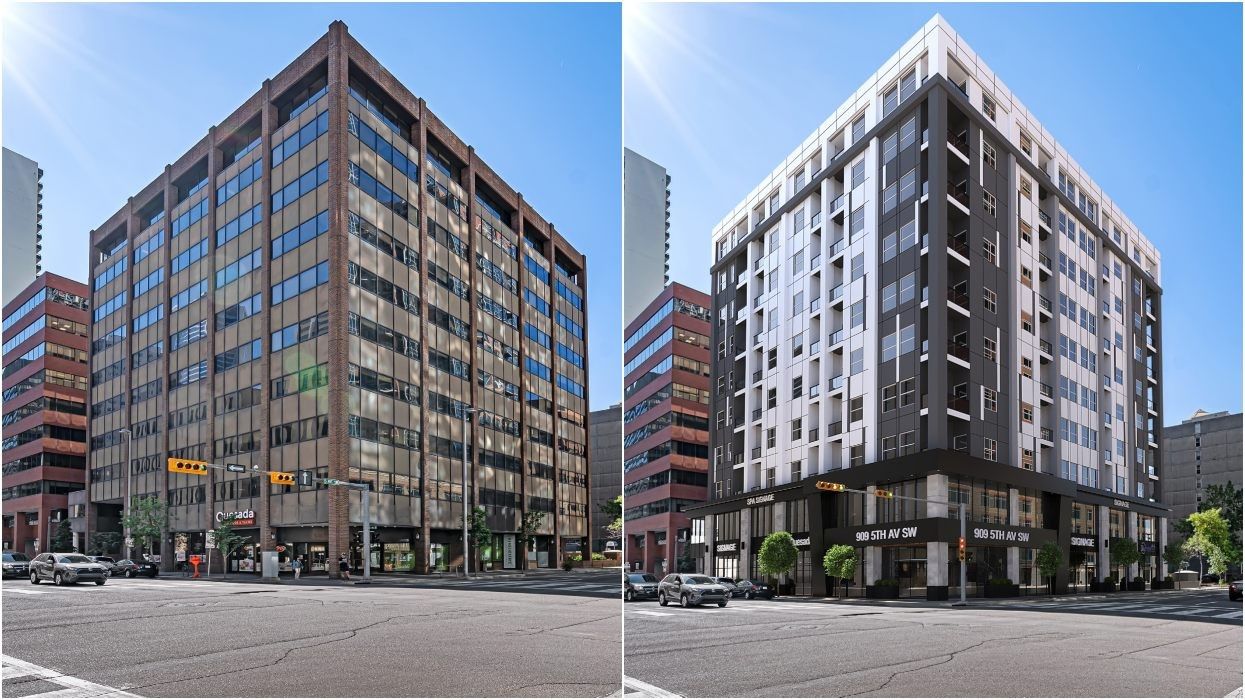In less than two years, one of the first projects announced as part of the City of Calgary's office conversion incentive program is getting close to completion.
The conversion of The Cornerstone, located at 909 5th Avenue SW, was announced in April 2022, along with the Palliser One at 125 9th Avenue SE and Teck Place at 205 9th Avenue SW, and is being undertaken by Peoplefirst Developments, the real estate development arm of Calgary-based Astra Group Corp.
The office building, formerly occupied by SNC-Lavalin, was completely vacant — save for the two retail tenants on the ground floor — when Peoplefirst Developments took possession in early 2022, CEO of Astra Group and Managing Director of Peoplefirst Developments Maxim Olshevsky tells STOREYS.
"Because it was our first conversion, obviously, you're concerned about everything," Olshevsky says. "But at the end of the day, the structure was sound. It had a good steel deck construction. We took a look at the bones and as long as the bones are good, everything else gets stripped out so it doesn't really matter."
Shortly after taking possession of the building, the Peoplefirst team began planning out the project and submitting for their building permit. Some pre-construction work soon began with construction officially commencing in November 2022.
The building is on track to finish up in early January and floors are being completed by the week. Above the retail component on the ground floor and the coworking space on the second floor, the third and fourth floors are completely done. Work is ongoing on the fifth and sixth floors, which are at a later stage than the seventh and eight floors, and so forth.
As work starts to wrap up on The Cornerstone, Olshevsky walks us through the process of converting the building.
One of the first steps was to deal with what was already there. The office space was completely vacant, but the space was still filled with furniture. Almost all the furniture was donated and pretty much anything that could be recycled — such as drywall — was recycled, save for carpeting, glass, and wooden doors.
"The first stage was all the interiors, then all the mechanical, then we did the exterior," says Olshevsky. "As we were removing the exterior, we were setting up the walls to replace the ones we removed. Once you start your exterior framing, at the same time you're working on all of your mechanical components — planning where you're going to core everything, making sure that everything you put on the plan actually is in line with the existing structure."
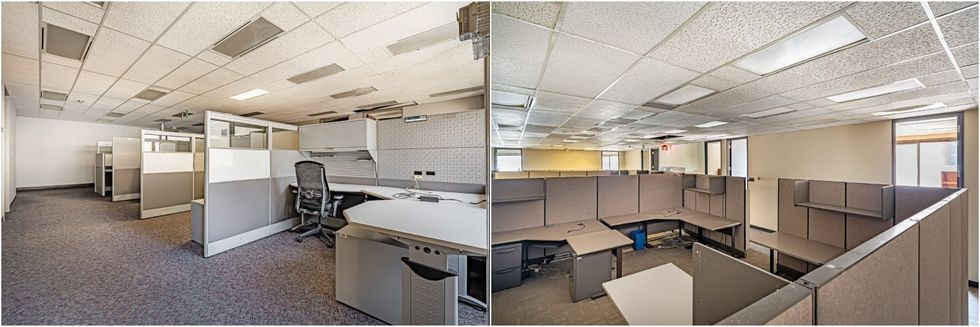
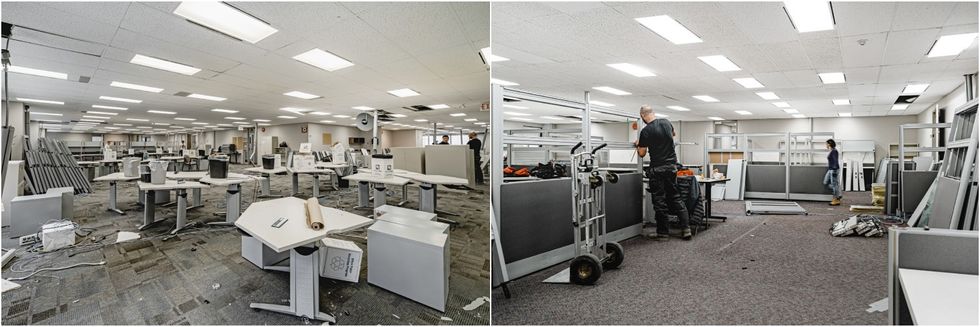
Because you're working with an existing building, surprises can often come up throughout the process of conversion. For The Cornerstone, Olshevsky says abatement was perhaps the biggest surprise, and took a bit of effort.
"We did the initial [asbestos] testing and a bunch of samples came back negative, and then we did another set of testing just to be sure, and one sample came back positive. Out of 10 samples, one is positive, so we deemed all the fireproofing as asbestos-containing. That was a big-ticket item. A big portion of our contingency went towards that," Olshevsky said.
"After the initial demolition was done, we had to scrape the underside of all floors to remove the asbestos-containing fireproofing and we had to do that before we could do any coring, because the moment you start coring the slab, you're starting to disturb the asbestos-containing materials and obviously that's not safe."
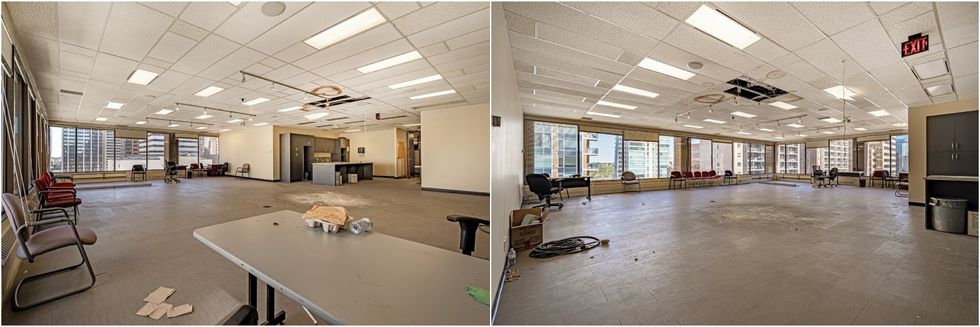
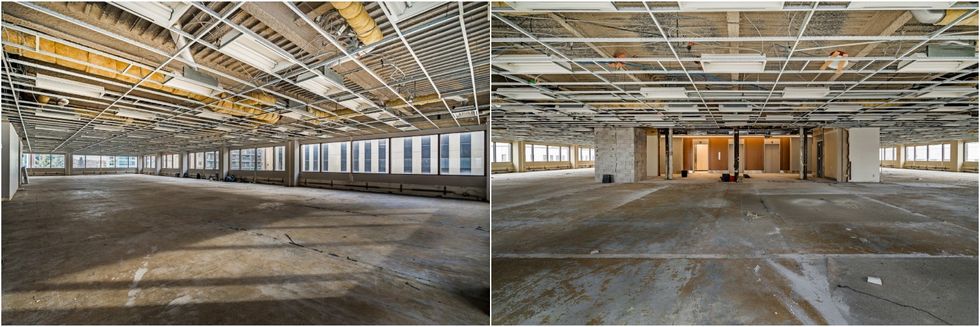
"The other things I would call reasonable surprises. We knew we had to refurbish elevators, but we just didn't really know to what extent. Or you knew that you would need X amount of time for the exterior to be completed, but you're exceeding that [time] because there are just so many little pieces to be done," Olshevsky continued."
"You need to carry a pretty heavy contingency that can take hits like that. The key is to not underestimate any major critical items — mechanical systems, electrical systems — because that can account for about 35% of your hard costs."
The centre core of the building largely remains, including the staircases and elevators, because there was no real need to do anything with them outside of refurbishment. What had to be significantly changed, reconstructed essentially, were the mechanical and electrical systems.
"You have to compare a new condo building to an office tower," Olshevsky explains. "In an office tower, there's one centralized heating, ventilation, and plumbing system, so everything runs on this one system and then branches out to the floors. Usually, even though you may have multiple thermostats, it's pretty much controlled from one distribution. In a condo [tower], they function differently. It's independently serviced for heating and ventilation and electrical.
"So for us, it was more about completely running everything new to each suite so now each suite is independently heated and cooled and we have fan coil units, and of course we have HRV units — air exchangers — just like in a traditional condo. We didn't follow the traditional methodology of using a baseboard heater that you see in a lot of apartments. Those systems are not very efficient, so we stuck to what one would say is a more costly solution, but it's a lot better for maintenance and for running the building. It's almost like a furnace that does both heating and cooling inside each suite through plumbing lines."
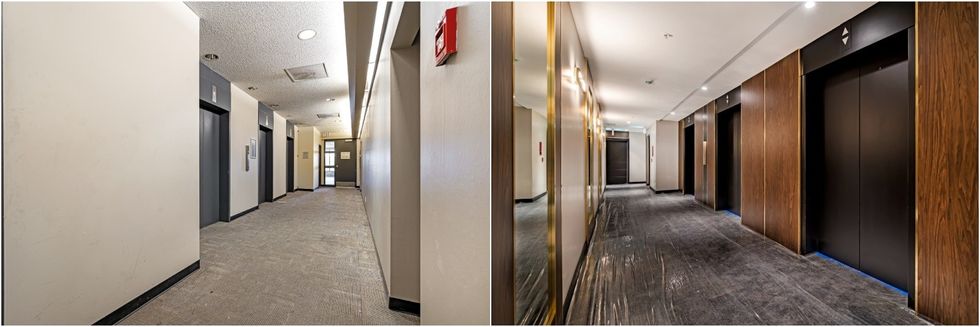
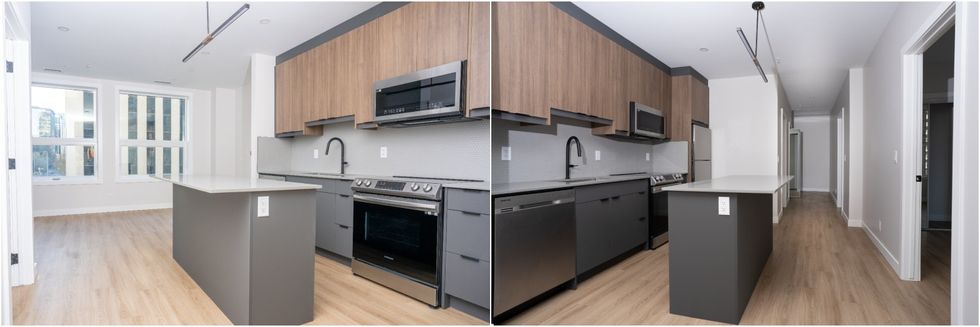
Another complicated aspect of The Cornerstone was the addition of balconies, which is uncommon with office-to-residential conversions — office buildings typically do not have any balconies at all — and required a lot of work on the exterior of the building, which remains ongoing.
"We took off some of the existing floorplate and reset the walls back to accommodate for balconies," says Olshevsky. "It's worked out to be pretty neat. You have a pretty decent-sized patio door, and the balcony is not huge, but it's better than not having it at all, right? For us, we really wanted to make sure our first project was unrecognizable from an office tower, so we went all the way."
There are some costs you see with conversion projects that you do not see — at least not as much as — in new builds, such as hazardous material abatement. However, even with those costs in mind, along with contingencies, it's still significantly less costly than a new build.
Olshevsky estimates that the cost gap between converting The Cornerstone and the demolition-construction route is around 25%, without even factoring in the additional time new builds need for approvals and permitting, which translates into more costs.
"There's plenty of costs that conversions have that new builds don't have, but it is nothing in comparison to what it takes to get a new tower off the ground. In my opinion, it's easier to work with an existing structure than building a new one. But some people in bigger companies may say it's just easier to start fresh because you don't have to worry about these things. For us, we just wanted to turn over units quicker. That's all we want to do."
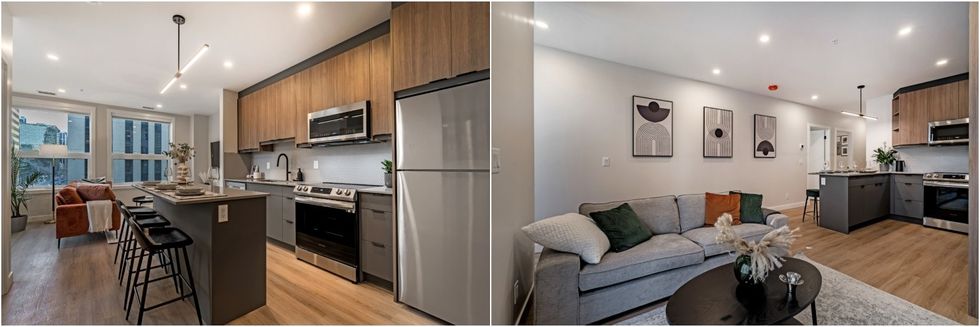
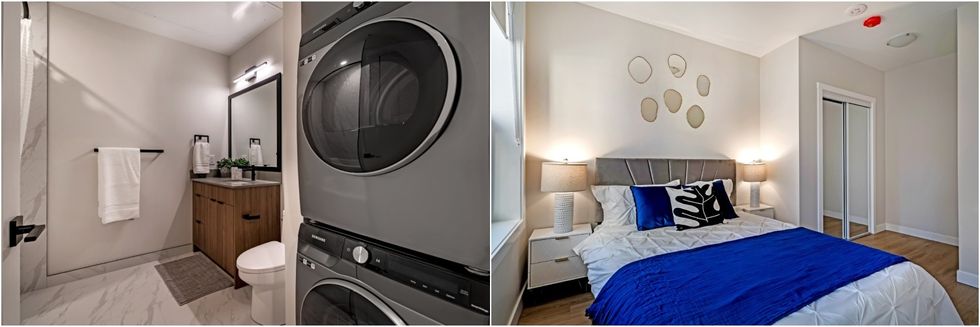
Once complete, The Cornerstone will have converted approximately 129,000 sq. ft of vacant office space into 112 rental homes, 40% of which will be provided at below-market rates.
Immediately following The Cornerstone, the Peoplefirst team will move onto their second office conversion project, the conversion of the heritage Petro Fina Building located at 736 8 Avenue SW, which is also being converted as part of the City of Calgary's incentive program.
Olshevsky says the goal is to start construction on Petro Fina in late January and they are once again aiming to complete it in 14 months — although he recognizes that Petro Fina could be more complex than The Cornerstone, due to it being a heritage building. Right now, however, he's just looking forward to seeing their first project come to fruition.
"I'm very proud of it and what we've done. We're in a good groove right now," Olshevsky said. "We just need to cross the finish line, take a breather for a few days, and then it's onto Petro Fina."
- How Peoplefirst Developments Decided to Convert Calgary's Petro Fina Building ›
- In Edmonton, An Industry Eagerly Awaits The Second Coming Of Office Conversions ›
- Gensler's Steven Paynter on His Office Building Conversion Algorithm ›
- STOREYS' Ontario Commercial Real Estate Trend Of The Year ›
- STOREYS' BC Commercial Real Estate Trend Of The Year ›
- Inside The (Partial) Office Conversion Of Edmonton's Phipps McKinnon Building ›
- Inside Calgary's First Office-To-Post-Secondary Conversion ›
- How Calgary's Canadian Centre Office Tower Became The Element Hotel ›
